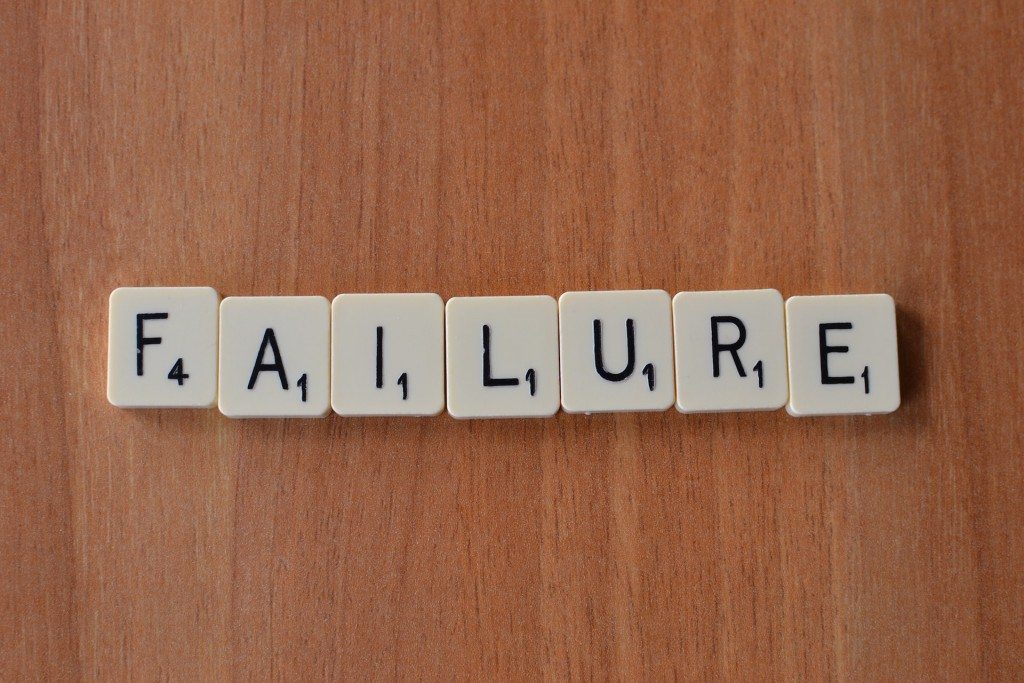It’s important for you, as a writer, to feel successful.
Unfortunately, that impressive pile of rejection letters you’ve accumulated lately might make you feel otherwise.
It could be your writing is just misunderstood. Perhaps you simply haven’t found the right home for your manuscript.
Then again, it might be you.
While you might not be successful at garnering acceptance, you could (unknowingly) be a complete genius at using the following rejection strategies:
Don’t Polish Your Work
Finishing a book is exciting. There’s no doubt you want to get it off to a publisher as soon as possible.
If, in your haste, you forget to edit and proofread for spelling and grammatical errors, your book is more likely to end up in the recycling bin than on bookstore shelves.
While the occasional mistake won’t deter an editor who’s keen on your work, a manuscript riddled with errors will come off looking more like the product of a lazy author.
As tedious as it can be, taking time to work through technical kinks will make your submission more professional.
Submit to the Wrong Publishers
It wouldn’t make much sense to send your novel to a publisher who specializes in textbooks. And would you really expect a Sci-Fi press to publish your picture book?
One of the biggest complaints from publishing houses is that they receive hundreds of manuscripts which are completely unsuitable to their lists.
Making the mistake of firing off simultaneous submissions to just any publisher is not only irritating (someone has to take the time to send it back to you), it also won’t increase your chances of being published.
Familiarize yourself with publishers and the kind of books they work with, so you can be more targeted in your submissions.
If you don’t get a publishing contract, at least you’ll save a lot of postage.
Disregard Submission Guidelines
Many publishing houses don’t accept unsolicited submissions.
If you’re fortunate enough to find a handful that are willing to look at your manuscript, they probably have a list of guidelines on their website, detailing how submissions are to be presented.
They may specify a certain editor to whom it should be addressed. Perhaps they have strict formatting requirements. Some publishers only accept submissions during certain months.
Whatever the case may be, guidelines are in place to make people’s jobs easier. If you choose to ignore them, you can’t expect an editor to spend time and effort considering your work.
Send it Registered Post
Your book is your baby. Obviously, it’s very important to you.
While it might seem like a good idea to send your manuscript via registered post (just in case it gets lost), stop to think about the impression this gives a publisher.
First, someone will have to sign for a registered package. No one will appreciate having to take time out of their busy day to do that.
Second, your unsolicited manuscript is no more important to an editor than the next guy’s. What makes you think yours deserves more attention than anyone else’s?
Third, it’s a waste of money. You have an original copy of your book on your hard drive and hopefully on backup disk. If something goes missing, you can print off another.
Reuse a Crusty Manuscript
Imagine, as an editor, you open a crisp manila envelope only to find a coffee-stained, dog-eared, ink-marked manuscript inside.
What would you think about its owner?
We all love the environment, and I agree there’s nothing wrong with reusing a manuscript that’s already made a couple of rounds. That is, under a few conditions:
- It should look nearly as good as it did when you printed it.
- There should be no comments or other markings left by other publishers on the manuscript.
- It must be free of stains and similar nasties.
If a manuscript meets these criteria, feel free to send it off until it looks otherwise. If only a few pages are unacceptable, simply print the necessary ones and reuse the rest of the original.
Attach an Unacceptable Cover Letter
There are so many ways in which a poor cover letter can spoil your submission. Reasons might include if it is:
- Non-existent
- Unnecessarily long
- Too short to be effective
- Self-congratulating
- Poorly written
- Addressed to wrong person
- Clever or cute
- Printed on anything but white paper
If you don’t know how to write an effective cover letter, do some research before you submit.
Some editors might not bother to read your cover letter at all, but you’ll want to make sure it’s perfect, nonetheless. If they like your work, it’ll be read sooner or later.
Forget to Include an SASE
The cardinal rule of virtually all publishing houses who still accept unsolicited submissions:
Send your own self-addressed, stamped envelope.
If you don’t follow this rule, you won’t hear back about your submission. Publishers simply cannot afford to pay postage for your rejection letters.
Even if your work is accepted, you don’t want to run the risk of looking stingy or negligent.
Also, be sure you include a decent quality envelope. Purchasing cheap ones that may rip easily when handled will not leave a good impression.
The Perfect Submission?
If you’ve committed any or all of these crimes of submission, don’t dwell on it too long. Now you know the key ingredients for a perfect package.
Will a pristine submission get your work accepted? Absolutely not, on its own.
But consider, a manuscript with loads of potential could be easily overlooked for any of the former reasons.
Editors have enough reasons to reject your book already; don’t give them any more.
